#Cuzco School
Text

Trifacial Trinity, anonymous artist (Cusco School), between ca. 1750 and ca. 1770
#art#art history#Cusco School#Cuzco School#religious art#Christian art#Christianity#Catholicism#Roman Catholicism#Holy Trinity#Trinity Sunday#Baroque#Baroque art#Peruvian Baroque#Peruvian art#South American art#18th century art#oil on canvas#Lima Art Museum
242 notes
·
View notes
Photo
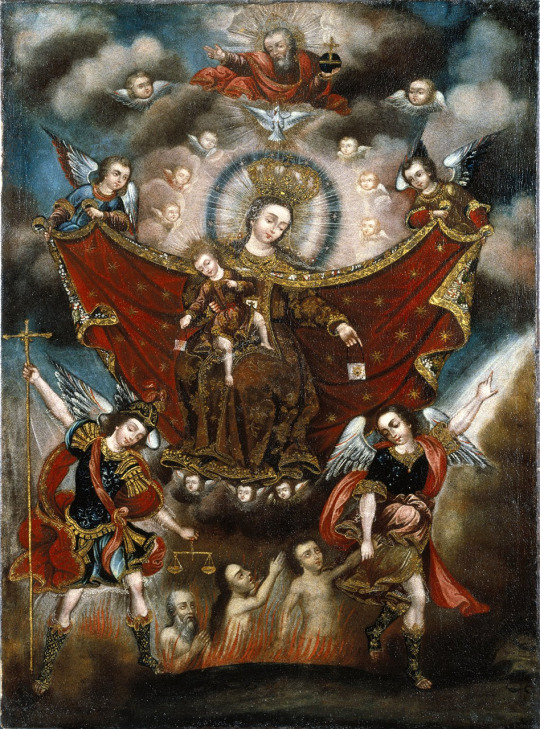
Nuestra Señora del Carmen
circle of Diego Quispe Tito (Peruvian, 1611 – 1681)
oil on canvas (73,7 × 104,1 cm), late-17th century
Brooklyn Museum
#723062583290216448/YF3iTzOg#Diego Quispe Tito#Catholic Church#Our Lady of Mount Carmel#Blessed Virgin Mary#Child Jesus#Monarquía Hispánica#Spanish Empire#Viceroyalty of Peru#17th century#Baroque#Brooklyn Museum#Cuzco School#Peru#sacred art#oil on canvas#paintings
112 notes
·
View notes
Text
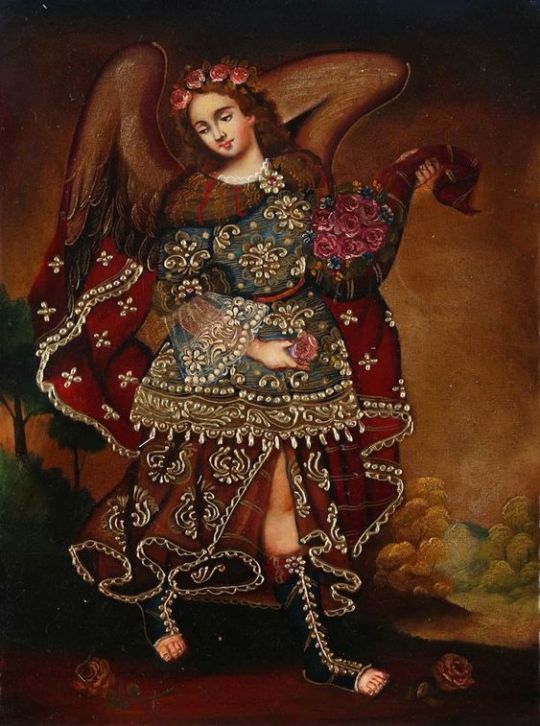

Archangel Gabriel - Cuzco School - Peru
6 notes
·
View notes
Text

ab. 1690-1710 Peruvian, Cuzco School - Portrait of a Lady with a Chiqueador
(Robert Simon Fine Art, Inc.)
168 notes
·
View notes
Text

ANONYMOUS (CUZCO SCHOOL, LATE 17TH - EARLY 18TH CENTURY)
Torment of the Evil Tongues (An Allegory of Lying and its Consequences)
titled 'TORMENTO DE LAS MALAS LENGUAS' and inscribed (lower center)
oil on canvas
Christie’s
219 notes
·
View notes
Photo

Anonymous, Cuzco school, Torment of the Evil Tongues, oil on canvas, late 17th century.
87 notes
·
View notes
Text
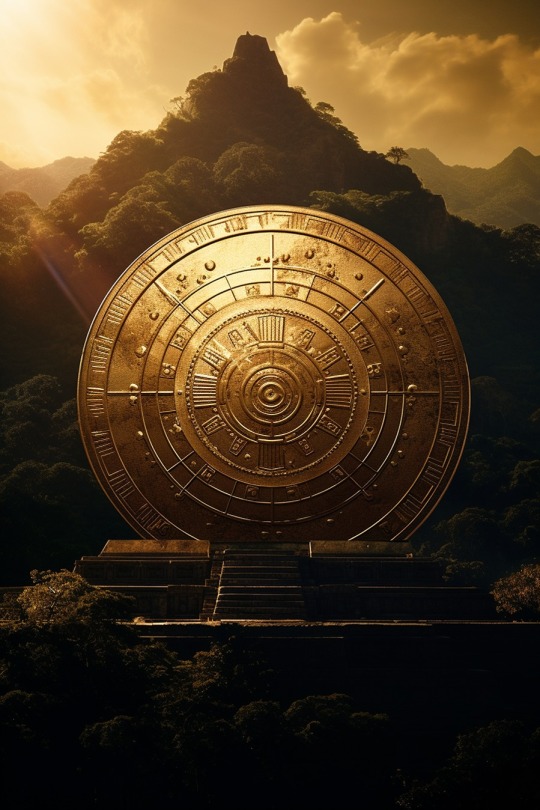



The Golden Sun Disc of Mu
Talon Abraxas
Held by ropes of pure gold in a shrine in the greatest Temple of Divine Light of the Motherland of Mu was the gigantic Golden Disc of the Sun. Before it, on an altar, which was a pillar carved out of solid stone, there blazed the eternal white Light of the crystalline Maxin Flame, the Divine Limitless Light of Creation. About 30,000 B.C. the Maxin Light went out on the Altar because of the evil of some of the priest-scientists of Great Mu. The Sun Disc remained in its shrine, however, until the time of the final destruction and submergence of 10-12,000 B.C.
As we said before, this Disc was not merely used as an object of adoration, nor was it the symbolic representation of our Solar Sun. It was also a scientific instrument, and the secret of its power came originally out of the dim past in the time of the Elder Race. In part, it was an object of adoration because it served in ritualistic temple services as a focus or point of concentration for those meditating. It also served as a symbolic representation of the Great Central, or Cosmic Sun, which, in turn, symbolizes the Creator. As a scientific instrument it was used in connection with a complex system of mirrors of pure gold, reflectors and lenses to produce healing in the bodies of those who were inside the Temple of Light. Indeed, that is why it was called Temple of Divine Light. Besides all these functions, the Sun Disc was a focal point for concentration of a dimensional quality. When the Disc was struck by a priest-scientist, who understood its operation, it would set certain vibratory conditions which could even bring about great earthquakes and, if continued long enough, might bring about a change in the rotation of the Earth itself. When attuned to a person’s particular frequency pattern it could transport this person wherever he wished to go merely by the mental picture he created. It was, therefore, an object of transportation.
The Golden Sun Disc of Mu was not made of ordinary gold, but was transmuted gold, and unusual in its qualities in that it was a translucent metal similar, evidently, to the “metal you can almost look through” of the UFOs.
Lord Muru brought this Disc with him when he journeyed to Lake Titicaca, and it was placed in a subterranean temple at the Monastery of the Brotherhood of the Seven Rays. Here, it was used not only by the students of life daily, but also by the Masters and Saints from the Mystery Schools throughout the world so that they might be teleported back and forth to sit in Council or to partake of some Transmission Ceremony.
When the Incas came to Peru, and come they did, for they were not native Quechua Indians, but came from a land across the Pacific, they established a highly spiritual society on top of the ruins of the great culture that had belonged to the Colonial Empire of Lemuria. The High Priests of the Sun of Tawantinsuyo–the name of the Inca Empire–built their Coricancha or Temple of the Sun exactly on top of an older structure dating from very remote times. From ancient records in their homeland across the Pacific they learned of the Golden Sun Disc of Mu and they knew it had been removed from the doomed continent and taken to a new land where Lord Muru had founded an Inner Retreat or Sanctuary.
Once in Peru, the Incan High Priests searched long for the Disc but were never able to locate it. However, when they had reached the place on the Spiritual Pathway where they could use the Disc to the benefit of all their people–the native, indigenous tribes they had amalgamated into an empire–as it had been used on Mu, then it was presented to them for their daily use in their Temple of the Sun at Cuzco.
The Inca Emperor at the time was a Divine Mystic or Saint, and he made a pilgrimage to the Monastery at Lake Titicaca, and there Aramu-Muru, as Spiritual Head or Abbot of the Brotherhood, gave the Disc to the Emperor. Several Brothers from the lake were directed to journey with him to the capital of the empire, Cuzco. Here the Disc was placed in a shrine that had been prepared for it, and it was secured with golden ropes as it had been held in ancient Lemuria. Even today, the holes through which these ropes passed can be seen at the Convent of Santo Domingo in Cuzco which is built on top of the Pre-Inca and Inca Sun Temple.
The Incas called their Temple of the Sun Coricancha, which means Place of Gold or Garden of Gold. This was because of the magnificent, solid gold, life-sized figures of men, animals, plants and flowers that were placed in a real Garden of Gold adjacent to the Sun Temple. But the priest-scientists called the Temple Amarucancha. On some of the stones at Santo Domingo today you can still see carved serpents (amarus) and that is the reason, they say, that some knew the Temple as Amarucancha, or, Place of the Serpents. However, that is not the real reason. Amaru is a form of Aramu, which is one of the names of Lord Maru. There are large snakes in the Andes which are still called amarus. Lord Maru’s name concerns a snake because his title is similar to that of another world teacher, Quetzalcoatl, the Plumed Serpent of the Aztec Empire in Mexico. Therefore, the Temple of the Sun at Cuzco was named for Aramu-Muru, head of the Monastery at Lake Titicaca, for it was he who enabled them to have, at last, the Golden Disc in their Sun Temple. Within this greater Temple there were smaller temples or shrines dedicated to the Moon, the Twelve Planets (Stars), and to the Seven Rays.
The Brotherhood of the Seven Rays became the leading force in the spiritual life of the Incas, and they learned the use of the Disc from ancient records left by the wise Pre-Incas who were Lemurian colonists. The Disc remained in the Coricancha at Cuzco until word reached the priests that Don Francisco Pizarro had landed in Peru. Knowing full well what was going to take place, sorrowfully they removed the Disc from the Cuzco shrine and returned it to its place in the subterranean temple at the Monastery. The Spanish conquerors never saw it.
On January 21, 1956, Beloved Archangel Michael of the Sun gave an address at His Retreat at Banff, in the Canadian Rockies. The following is an excerpt:
Many of the Temples used on Atlantis and Lemuria have been raised into the etheric realms. Some day they will be lowered again when man is spiritually ready to receive them. It has happened that one or more of the precious stones used in the construction of these Temples have been put in the hands of a High Priest or Head of a Spiritual Order where they form a connection with the Celestial Hierarchy. There are several dozens of the stones from My own Temple in the possession of individuals at various points on the Earth’s surface today…
The Golden Sun Disc of Mu is one of the precious stones referred to by Lord Michael. And it was put in the hands of the Head of the Brotherhood of the Seven Rays, Aramu-Muru. The Disc will remain at Lake Titicaca until that day ‘when man is spiritually ready’ to receive it and to use it once again. On that day the Golden Disc will be taken out of its subterranean chamber and placed high above the Monastery of the Brotherhood. For many miles the pilgrims of the New Dawn will see it once again reflecting the glorious rays of the Sun. Coming from it will be an undeniable tone of purest harmony that will bring many followers of light up the foot-worn path to the ancient gate of the Brotherhood of the Seven Rays, and they shall enter the Valley of the Blue Moon for fellowship in the Father.
Excerpt from Secret Of The Andes
25 notes
·
View notes
Text

'Warrior Angel Ariel'. Cuzco School.
26 notes
·
View notes
Text

Cuzco School, Our Lady of Guadalupe (circa 1813).
1 note
·
View note
Text
Events 11.15 (before 1970)
655 – Battle of the Winwaed: Penda of Mercia is defeated by Oswiu of Northumbria.
1315 – Growth of the Old Swiss Confederacy: The Schweizer Eidgenossenschaft ambushes the army of Leopold I in the Battle of Morgarten.
1532 – Spanish conquest of the Inca Empire: Commanded by Francisco Pizarro, Spanish conquistadors under Hernando de Soto meet Incan Emperor Atahualpa for the first time outside Cajamarca, arranging for a meeting in the city plaza the following day.
1533 – Francisco Pizarro arrives in Cuzco, the capital of the Inca Empire.
1705 – Rákóczi's War of Independence: The Habsburg Empire and Denmark win a military victory over the Kurucs from Hungary in the Battle of Zsibó.
1760 – The secondly-built Castellania in Valletta is officially inaugurated with the blessing of the interior Chapel of Sorrows.
1777 – American Revolutionary War: After 16 months of debate the Continental Congress approves the Articles of Confederation.
1806 – Pike Expedition: Lieutenant Zebulon Pike spots a mountain peak while near the Colorado foothills of the Rocky Mountains. It is later named Pikes Peak in his honor.
1849 – Boilers of the steamboat Louisiana explode as she pulls back from the dock in New Orleans, killing more than 150 people.
1864 – American Civil War: Union General William Tecumseh Sherman begins his March to the Sea.
1889 – Brazil is declared a republic by Marshal Deodoro da Fonseca as Emperor Pedro II is deposed in a military coup.
1917 – Eduskunta declares itself the supreme state power of Finland, prompting its declaration of independence and secession from Russia.
1920 – The first assembly of the League of Nations is held in Geneva, Switzerland.
1920 – The Free City of Danzig is established.
1922 – At least 300 are massacred during a general strike in Guayaquil, Ecuador.
1928 – The RNLI lifeboat Mary Stanford capsizes in Rye Harbour with the loss of the entire 17-man crew.
1933 – Thailand holds its first election.
1938 – Nazi Germany bans Jewish children from public schools in the aftermath of Kristallnacht.
1942 – World War II: The Battle of Guadalcanal ends in a decisive Allied victory.
1943 – The Holocaust: German SS leader Heinrich Himmler orders that Gypsies are to be put "on the same level as Jews and placed in concentration camps".
1951 – Nikos Beloyannis, along with 11 comrades, is sentenced to death for attempting to reestablish the Communist Party of Greece.
1955 – The first part of the Saint Petersburg Metro is opened.
1965 – Craig Breedlove sets a land speed record of 600.601 mph (966.574 km/h) in his car, the Spirit of America, at the Bonneville Salt Flats in Utah.
1966 – Project Gemini: Gemini 12 completes the program's final mission, when it splashes down safely in the Atlantic Ocean.
1966 – Pan Am Flight 708 crashes near Dallgow-Döberitz, East Germany, killing all three people on board.
1967 – The only fatality of the North American X-15 program occurs during the 191st flight when Air Force test pilot Michael J. Adams loses control of his aircraft which is destroyed mid-air over the Mojave Desert.
1968 – The Cleveland Transit System becomes the first transit system in the western hemisphere to provide direct rapid transit service from a city's downtown to its major airport.
1969 – Cold War: The Soviet submarine K-19 collides with the American submarine USS Gato in the Barents Sea.
1969 – Vietnam War: In Washington, D.C., 250,000-500,000 protesters staged a peaceful demonstration against the war, including a symbolic "March Against Death".
0 notes
Text
León Magno Montiel
@leonmagnom
El nombre Huáscar nació en el Cuzco, en la capital inca, es un toponímico que designa un lugar ancestral en las cumbres peruanas.
Fue el nombre del hermano mayor de Atahualpa, quien murió guerreando, su cuerpo fue arrojado al caudaloso Yanamayo, el río de aguas sagradas.
El 12 de junio de 1964 nació un Huáscar en Maracaibo, hijo del publicista pionero Rafael “Felo” Barradas y la abogada Zarelda Torres. Desde muy pequeño mostró su gran sensibilidad para la música, destacaba en las clases del Colegio Alemán de Maracaibo, participaba en sus actos culturales con gracia, ejecutando la flauta dulce y el cuatro.
Por su evidente talento musical, sus padres lo inscribieron en el Conservatorio “José Luis Paz” en la avenida El Milagro, allí comenzó a estudiar teoría y solfeo, piano complementario y armonía. Fue miembro fundador de La Estudiantina del Zulia, que tuvo como maestro tutelar al guitarrista Ciro Adarme; también lo fue de la Orquesta Sinfónica Juvenil que dirigía el talentoso saxofonista llanero Juan Belmonte, quien años más tarde, lo contrataría como ejecutante del saxo tenor para su orquesta de bailes La Máxima.
“Felo” Barradas fue fundador de Ondas del Lago Televisión, el primer canal regional del país. Era un hombre del mundo del espectáculo, que escuchaba con detenimiento los elogios y recomendaciones de los profesores de su hijo. Por ello, decidió solicitar una beca para enviarlo a estudiar música a los Estados Unidos, así comenzó el largo periplo de estudios de alto nivel del joven Huáscar.
En 1982 llegó a Pasadena, ciudad donde nació Texas, el importante estado sureño, allí comenzó su curso en el San Jacinto College. A finales del año 1983 se mudó a Nueva York para estudiar en el Brooklyn College por cinco años, institución de gran prestigio fundada en 1930, con su lema “Nada sin un gran trabajo”.
En la gran manzana comenzó a escuchar jazz, descargas latinas y la gran música del mundo en sus teatros. Para complementar su modesta beca, trabajó como despachador de pizzas a domicilio; el flautista marabino iba por las calles de los condados neoyorquinos con un bolso térmico repartiéndolas en casas y sitios de trabajo. Soportó veranos sofocantes, los crudos inviernos con despiadadas nevadas; en el típico clima contrastante de la costa Este de los Estados Unidos. Huáscar celebraba la llegada de la benévola primavera, que encendía la música en los parques, activaba las caminatas entusiastas, mostraba sus calles llenas de gente noche y día, jardines con múltiples germinaciones y poderoso colorido.
En 1988 entró a la respetada academia Juilliard School of Music, escuela fundada en 1905, que en un principio estuvo ubicada en la Fifth Avenue, pero desde 1969 la instalaron en el Lincoln Center. En esa época conoció a los grandes clásicos de la literatura estadounidense, habría de empezar por Walt Whitman. Después conoció a Arthur Miller y Henry Miller, leyó con devoción a Thomas Wolfe: todos ellos vivieron en Brooklyn. Luego conoció la obra de Paul Auster, quien reside en ese condado desde los años 80, este gran narrador expresó:
“Nadie puede cruzar la frontera que lo separa del otro, por la sencilla razón de que nadie puede tener acceso a sí mismo”.
Auster a propósito de su barrio ha manifestado: “Brooklyn es un inventario del universo y tiene la peculiaridad de que mientras que en todas partes las diferencias étnicas y religiosas son una fuente potencial de conflictos, aquí se convive en armonía”.
En la capital del mundo, “the big apple”, Huáscar no perdió la conexión con la música venezolana, ni con la caribeña, siempre escuchaba y ejecutaba temas de Aldemaro Romero, Vytas Brenner, la Orquesta Aragón, Néstor Sánchez, Guaco y la Fania All Stars.
En 1990 emprendió su viaje al viejo continente para realizar una especialización en flauta, llegó a la Alemania que siempre soñó conocer, en la que anhelaba vivir desde sus años de estudiante de secundaria, y se estableció en Frankfurt am Main: la ciudad cuna del genio Johann Wolfgang Von Go
ethe. Allí permaneció por dos intensos años mientras culminaba sus estudios superiores. Huáscar conoció a maestros de la calidad de Bernard Goldberg y Mirjam Nastasi, la celebérrima flautista nacida en Utrecht. Fue discípulo del director de orquestas y flautista canadiense Robert Aitken.
El escritor Premio Nobel 2001 V.S. Naipaul (Trinidad, 1932) relató: “Miranda fue el primer sudamericano culto que Europa conoció”. Sin duda, Huáscar es otro hijo de América del sur que demostró su amplia cultura en este continente antiguo, un gran museo a cielo abierto.
Barradas regresó a Venezuela con 29 años de edad, preparado para comenzar su carrera como solista y abrirse paso en la música comercial, entró a la agresiva competencia del disco y sus escenarios. Participó en la Orquesta Sinfónica de Maracaibo y en la Orquesta Sinfónica Municipal de Caracas, donde lo contrataron como flautista co-principal. En paralelo comenzó a producir álbumes en la vertiente del “neo-folclor” o “folclor-fusión”, junto a sus fraternos compañeros Elvis Martínez, Jorge Polanco, Fernando Valladares, Gilberto Ferrer, Rafael Simón Bolívar, Agustín Espina; con ellos ha producido una veintena de álbumes memorables, logrando buenas ventas y múltiples elogios de la crítica especializada.
Es poco usual que un intérprete de las grandes obras de la música universal, sienta tanta pasión por la música tan raigal y sencilla de su patria caribeña, ese es el caso de Huáscar Barradas: buen intérprete de Bocherini, de las sonatas para flauta de Johann Sebastián Bach y de los conciertos de Wolfgang Amadeus Mozart. Es un fiel ejecutante de las obras de Claude Debussy y de Haydn. Además, Huáscar ha tomado préstamos e influencias del rock y el jazz, de la salsa y el feeling, pero el corazón de su música ha sido el folclor venezolano: sus ritmos, variantes, síncopas más particulares.
La periodista argentina Ivanna Soto ha afirmado: “Pese a que muchos de estos hits están colmados de préstamos e influencias, se diferenció de todo lo que se había escuchado hasta entonces. Su recital es un blues eléctrico, ecléctico y desesperado que suena con fuerza con los riffs abrumadores e ilimitados de Page, los alaridos desbocados de Plant, el beat elocuente de Bonzo y el ritmo de Jones”. Esto para explicar lo que fue la música Led Zeppelin. Esa misma fórmula ecléctica, la podemos aplicar al zuliano planetario Huáscar Barradas Torres, quien unió la ópera “Carmen” de Georges Bizet al humor en tiempo de reggae de Mermelada Bunch; él fusionó el canto de Ángela con el rapeo de Pipo Ramírez, en su séptimo álbum “Encuentros”.
Huáscar Barradas; Ángela, Pipo y Leo.
Uno de los trabajos más importantes realizados por el flautista Barradas, fue el canto de las ballenas jorobadas del Pacífico, producción que grabó con hidrófonos especiales en Colombia. Esa obra para orquesta la estrenó en el 2003 en un concierto de gala, una pieza exploratoria de alto nivel artístico. El escenario para su premier fue la Catedral de Sal de Zipaquirá, ubicada a las afueras de Bogotá, allí fue donde montó la obra “Pacificando”, en las profundidades de esa antigua mina de sal. En esa pieza incluyó el canto de las ballenas jorobadas del Océano Pacífico y lo combinó con instrumentación diversa: sinfónica, percusión, ocarinas, voces humanas y la actuación como solista de Martha Senn, la destacada mezzo soprano colombiana.
Desde hace dos décadas, Huáscar vive en Caracas, allí ha permanecido como músico de orquesta, realizando sus conciertos, grabando colaboraciones importantes con artistas de la talla de Oscar D’ León, Frank Quintero, Francisco Pacheco, el pianista Leopoldo Betancourt, con quien grabó los álbumes “Dos mundos” y “Dos Mundos 2”. Desde la capital venezolana, Huáscar programa sus giras por el mundo. Hasta ahora ha tocado su flauta en 25 naciones, incluyendo su amada Alemania, donde el diario Frankfurter Allgemeine Zeitung comentó: “El señor Barradas nos elevó al espectro expresivo de la flauta, más allá de lo que nuestros oídos europeos están acostumbr
ados. Brilló con absoluta precisión rítmica y virtuosismo”.
En 2011 fue nominado al Premio Grammy Latino por su álbum “Entre amigos 2” logro que lo catapultó en mercados que aún no conocía. Hasta ahora ha realizado 100 conciertos en el exterior y sueña con ir a Rusia, por su gran tradición musical, y a Australia por el espíritu innovador y aventurero de sus nativos.
Uno de sus proyectos actuales, quizá el más ambicioso, es el “Tributo a Simón Díaz” el genio de la tonada, que murió en el convulsionado mes de febrero de 2014. Sin duda, El Tío Simón es el mayor rasgo de identidad musical de Venezuela. En este concierto homenaje participan importantes cantantes y músicos, nucleados alrededor del flautista zuliano, para aportar su talento. Esa gira cuenta con el aval y asesoría de la hija de Simón, la escritora Bettsimar Díaz.
En su casa ubicada en la zona alta de la gran Caracas, Huáscar tiene paredes escritas con versos propios y ajenos, un chinchorro guajiro colgado en el balcón y muchos cedés de música regados por todos lados. Es abstemio, fanático de la comida criolla, un hiperactivo trabajador. Una imagen de Francisco de Miranda, nos recuerda que el precursor de la independencia ejecutaba la flauta transversa, de una sola llave, elaborada con madera de boj. Miranda tocaba importantes obras de su época, lo hizo frente al genio Franz Joseph Haydn, el padre de la sinfonía, se encontraron en Austria. Lo que no conseguimos por ningún lado en su hogar, son sus zapatos, ni sus cotizas. Así queda claro que su vocación es andar descalzo por los escenarios del mundo, lo que para él representa la máxima sensación de libertad.
Con una gran presencia en los medios electrónicos, con una agenda colmada de conciertos y muchas composiciones suyas sonando en las emisoras de América Latina, Huáscar va por los teatros del mundo descalzo, haciendo melodías con su flauta, encantando ballenas y acompañando tonadas
Para recibir en tu celular esta y otras informaciones, únete a nuestras redes sociales, síguenos en Instagram, Twitter y Facebook como @DiarioElPepazo
El Pepazo
0 notes
Photo

La procesión de la Merced en la Plaza Mayor del Cuzco
attrib. to Diego Quispe Tito (Peruvian, 1611 – 1681)
oil on canvas, c. 1674
Palacio de San Juan de Buenavista, Cuzco
#687269735301316608/o180qJr5#Diego Quispe Tito#Catholic Church#Our Lady of Mercy#Corpus Christi#Cuzco#Monarquía Hispánica#Spanish Empire#Viceroyalty of Peru#17th century#1674#Baroque#Peru#Cuzco School#Mercedarians#processions#sacred art#paintings
3 notes
·
View notes
Text
14th January 2023 Writings
14th
Excerpt from: The Loneliness of Alex
It seemed that she was still trying to take everything in.
“Of course,” Stacy said.
Quinn reopend the Waif.
All in all, the Club of Cute's first meeting was a success, Quinn considered as she walked home. The anime was certainly interesting. She would see if Sailor Moon was worth her time, that weekend.
Alex got home late.
“Alex?”
Words: 59
Excerpt from: Freaky Groundhog
“Hi,” Janelle said.
“Diana here.”
“That is still quite strange,” Janelle mused. “What's up?”
“Ken is here!”
“I'll put Bethany on,” Janelle said.
“Thanks.”
“Where is he parked?” Bethany asked.
“In frront of the front door.”
“You can go around the back, to the basement entrance.”
“And I'll be able to see it?”
Words: 53
Excerpt from: Choice of the Cheerleader
She would be the most popular!
“And so, Kevvie and I will be auditioning for the Cadbury Tales,” Brittany explained.
“That is great, Sweeite,” her father said.
“You’ll have a great time,” Ashley-Amber added.
“Thanks.”
“But what if Kevin doesn’t get the role?” her father asked.
“Then I’ll be annoyed at him!” Brittany said vehemently.
“Is that all?” Ashley-Amber asked.
“I think so,” Brittany answered as she twirled some hair.
Ashley Amber knocked on Brittany’s door. There was something she wanted to ask.
“Yes, Ashley-Amber?” Brittany asked after she opened the door.
“Sweetie? Would you like me to help you practice for your audition?”
Her stepdaughter twirled a lock of hair. “Um, sure.”
“I also did the Canterbury Tales when I was at school.”
“Great! It will be a great help.”
“I’ll go and get my copy.”
The auditions were well underway.
“I will make a dainty garland for my head and sing,” Brittany read.
“Very good, Brittany,” O’Neill praised. “Now, the wedding scene.”
Brittany was thankful (again) for Ashley-Amber’s coaching as she turned to the scene.
“I do, Palamon,” Brittany said.
“Yeah, me too.” Kevin began kissing Brittany but she backed off after one kiss.
“I pronounce you, husband and wife.”
Words: 202
Excerpt from: Legacy of Westchester
In September, a mage vigilante group calling themselves the 'MinuteElves', defend Lahaina, Hawaii from an immature kaiju.
South America
A kaiju is discovered in a remote area of Guyana. The Royal Knights (see below) investigate in mid June.
In September, strange activity is noted in Cuzco.
Scandinavia
Strange activity is noted in Kirkenes, Norway in early April.
Norway would establish it’s own Department of Magical Investigation in September.
Africa
Egypt
In Giza, strange rumbles are heard from the Sphinx...
Japan
In September, Fujiwara Suki, a 16 year old resident of Kobe falls victim to a prank. Trapped underwater, she releases a burst of energy, vaporising the stream…
Words: 107
Total: 421
#alternate history#ashley-amber taylor#brittany taylor#daria#fanfic#january writings#kevin thompson#original fiction#stacy rowe#steve taylor#timothy o'neill
0 notes
Text
Carrera Solidaria por Occopata 🏃♀️
Occopata es una comunidad a 40 minutos de Cuzco, la cual esta ubicada a 4,000 msnm. Occopata es una comunidad campesina que necesita nuestra ayuda ahora más que nunca.
¿Quieres saber por qué? 🤔
En la actualidad, el Perú esta pasando por una época de frío extremo, en la cual la temperatura esta disminuyendo drásticamente, y hay personas que no tienen los recursos necesarios par apoder protegerse de estas bajas temperaturas. Occopata es el hogar de muchas de estas personas (1,100).
En Occopata, el frío extremo está afectando a sus cultivos, y el agua es de un mala calidad. Una noticia extremamente triste es que el 80% de sus niños sufren de anemia. Necesitan ropa necesaria para poder sobrevivir a este cambio de temperatura que los azota.
Sabemos que como estudiantes CAS, es nuestro deber apoyar a la comunidad de Occopata para poder brindarles lo necesario para este frío clima. Es por esto que necesitamos tu ayuda.
En este proyecto vamos a pedirles su apoyo mediante la "CARRERA SOLIDARIA". Pero.. ¿Qué es la "Carrera Solidaria"? 🤔
La "Carrera Solidaria" consiste en correr un determinado número de vueltas. De acuerdo al número de vueltas que has logrado, tus patrocinadores ( madre, padre, amigos, etc. ) van a darte cierta cantidad de dinero, la cual será entregada para la comunidad de Occopata como una DONACIÓN.
A los alumnos del colegio San Ignacio de Recalde School, se les entregó su "Cartilla Solidaria", en la cual han documentado la cantidad de vueltas que han corrido, y han apuntado a sus patrocinadores y el dinero que les han prometido dar.
Investigación:
Para este proyecto, se investigó sobre la situación por la que estaba pasando la comunidad de Occopata, para de esta manera poder pasar a la etapa de "Preparación".
Preparación:
En esta etapa, los LÍDERES CAS, reunieron toda la información previamente investigada para poder crear un "speech", el cual sería comunicado a todos los grados, para que de esta manera formen parte de la "Carrera Solidaria".
Planificación:
Esta actividad fue planificada de una manera organizada, en donde cada alumno tenía asignado un salón a donde ir y tenía que documentar su avance en un Documento de Excel. De esta manera, se evitaron errores y se mantuvo todo ordenado.
Acción:
Se cumplió la labor de sensiblizar en las aulas y los alumnos lograron comprender de que se trataba esta "Carrera Solidaria". Asimismo, se les entregó sus respectivas "Cartillas Solidarias" para que puedan formar parte de la activdad benéfica.
Demostración:
fotos
Para finalizar, me gustaría decir que esta actividad fue una de mis favoritas ya que pudimos ver como los alumnos se esforzaban para poder conseguir el dinero que sería donado a la comunidad de Occopata y esta pueda ser ayudada. Personalmente, me pareció una actividad muy divertida, entretenida, pero sobre todo, solidaria.
Gracias a esta experiencia pudimos informar a los alumnos sobre las circunstancias por las que está pasando Occopata, y motivarlos a ayudarnos para poder hacer un bien a esta comunidad, entregándoles un buzo para cada estudiante de inicial y primaria, y además, material deportivo para clases de educación física.
Lo más dificil de esta experiencia fue explicarles a los niños menores, de primer grado de primaria, sobre la actividad. Ellos aún no comprenden términos muy complicados, por lo que adaptamos nuestro speech para que puedan entender. Además, les explicamos con mucha paciencia y resolvimos las dudas de cada estudiante.
“Aquellos que son más felices son los que hacen más por otros”. Booker T. Washington.
#cas #occopata #carrerasolidaria
0 notes
Text
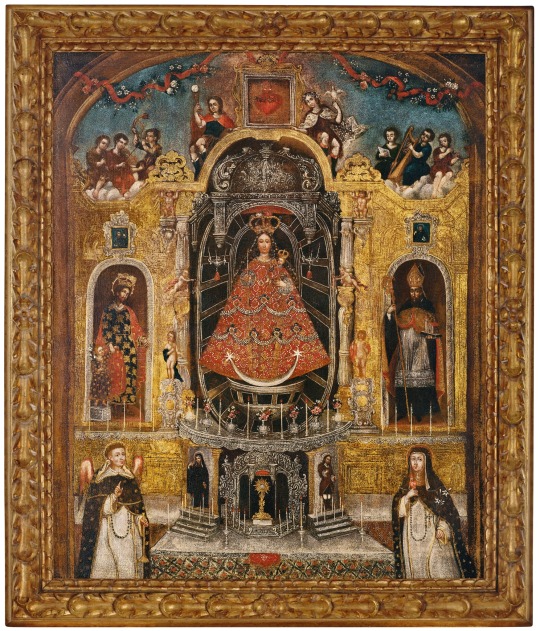
ANONYMOUS (CUZCO SCHOOL, 18TH CENTURY)
Altar of Our Lady of Cocharcas with Saint Joseph and the Holy Child, Saint Vincent Ferrer, Saint Rose of Lima and Saint Jerome
oil on canvas
Christie’s
44 notes
·
View notes
Note
YEAHYEAH I heard you were traveling ooohh that's so cool 💕💕💕💕✨ Where did you visit ?????? And I've been good just dealing with school (last year of Uni) and work so I never had the chance to come online 😭💔 -🦋
peru mainly !! hold on, i can attach some photos

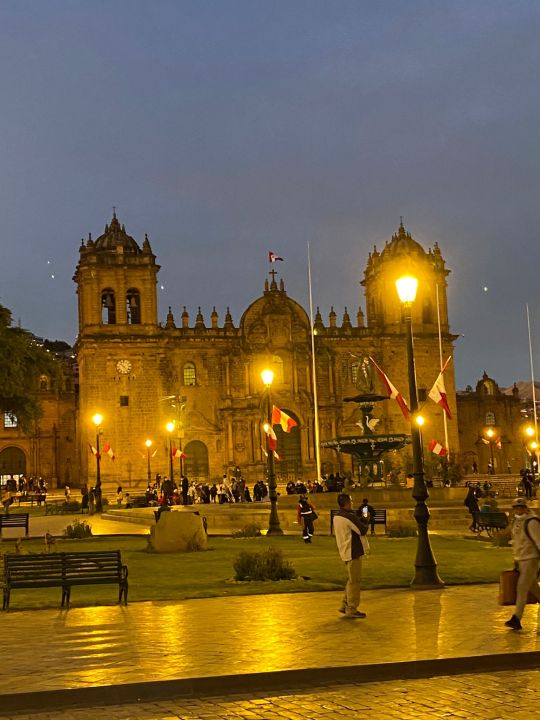
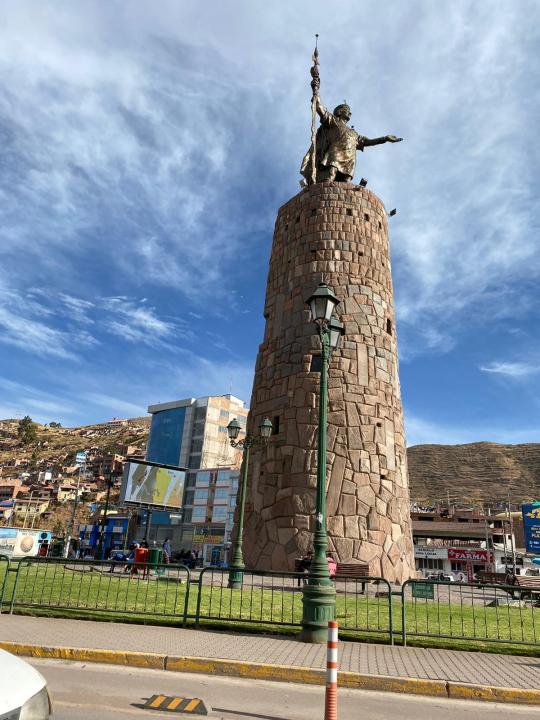
^* cuzco ruins, plaza de armas, + a statue i drove by 💀🤚
also you're in uni ??? :0 if you're comfortable answering, can i ask what your major is ? and jeez, school and work - don't worry, i get that TT
0 notes